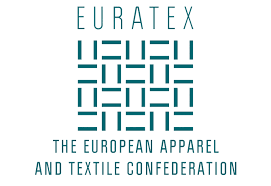Euratex scales plans for textile waste handling
The European Apparel and Textile Confederation (Euratex) says it plans to pursue fibre-to-fibre recycling for 2.5m tonnes of textile waste by 2030 through its ReHubs initiative.
Euratex first unveiled its ReHubs initiative at the end of 2020 as part of a bid to upcycle textile waste and circular materials across the continent.
The aim is to establish five recycling hubs, known as ReHubs, serving the whole of Europe for upcycling waste and circular materials by collecting, sorting, processing, and recycling industrial, pre and post-consumer textile wastes.
Five EU member states emerged to be the ideal candidate hosts based on their existing or emerging recycling industry as well as local textile/garment industry: Belgium, Finland, Germany, Italy, and Spain.
These five initial ReHubs would, however, operate across borders and benefit many other European countries in the short and mid-term.
Now, Euratex has announced the first project supported by the ReHubs, ‘Transform Waste into Feedstock’, which aims to build the first 50,000 tonne capacity facility by 2024.
The news comes as the first ReHubs Techno Economic Master Study (TES) was completed this month and sheds light on key figures, and options to collaborate for a European-wide solution.
Euratex says to reach a fibre-to-fibre recycling rate of around 18-26% by 2030, a capital expenditure investment in the range of EUR6-EUR7bn will be needed, particularly to scale up sufficient sorting and processing infrastructure. The economic, social, and environmental value which could be realised, could potentially total an annual impact of EUR3.5-EUR4.5bn by 2030, it adds.
Once matured and scaled, the textile recycling industry could become a profitable industry with a total market size of EUR6-EUR8bn and around 15,000 direct new jobs by 2030
Next steps of the ReHubs initiative
At this stage, Euratex says its joint work paves the way for:
· A European textile recycling roadmap proposing objectives and key results to recycle fibre to-fibre 2.5m of textile waste by 2030
· A leading collaboration hub with large players and SMEs from across an extended European textile recycling value chain
· A first concrete portfolio of four launching projects:
1. Transform textile waste into feedstock
2. Increase the adoption of mechanically recycled fibres in the value chain
3. Expand capacity by solving technical challenges for thermo-mechanical textiles recycling
4. Create capsule collection with post-consumer recycled products
The first project addresses current sorting technologies which have limits to identifying materials with sufficient accuracy for the subsequent circular recycling processes, Euratex says. The ‘Transform Waste into Feedstock’ project will focus on further developing and scaling such sorting technologies.
To ensure inclusivity and mobilise resources, Euratex has set three stakeholder groups: a Business Council pooling together companies to perform the TES study; a Stakeholder Forum with a wider pool of business, research, and academia players which has gathered twice to share high-level information and support future collaboration; a Euratex Task Force with 14 national associations to review progress of the ReHubs and align with policy and industry developments on a national level.
Euratex recently re-elected Italian textile entrepreneur Alberto Paccanelli as president, extending his mandate until June 2024.
Source: Euratex


